Frequently asked questions (FAQs)
For legacy chargers with model numbers EVCP-7KW-S-1PH and EVCP-7KW-T2-1PH please contact our Technical Support team on (01952) 238 128 or (03300) 249 279. Our lines are open 8:30-1700 (Monday-Thursday), and 08:30-16:00 (Friday).
Alternatively, visit our Troubleshooting guides for self-help information.
Dynamic Load Management protects the main fuse of a property from overload by monitoring the total load being drawn by the property and adjusting the EV charger output accordingly.
For example:
- Main house fuse = 60 amps
- EV charger max power = 32 amps
- Power shower = 40 amp
If the EV was charging and somebody decided to have a shower this could blow the main house fuse - 32 + 40 = 72 amps (fuse exceeded by 12 amps). In this case the load management device will tell the charger to reduce its charge rate to <20 amps until the shower is turned off, thus protecting the main fuse.
This feature is only available as an option with the installation of a separate CT Clamp which is designed for installation inside the main consumer unit or around the tails from the main fuse.
Our CT clamp/Dynamic Load Management Kit part numbers are:
- EVA120CT1 (for EVS and EVT models)
- SYNC-LMK (for EVCP models)
Click here to view our range of accessories
Self-installation of EV chargers at home or workplace is not possible for safety and legislative reasons. We recommend approaching our network of qualified OZEV approved electricians for a quotation. This will allow you to purchase a SyncEV BG Charger and have it safety installed at your home or place of work.
Type 1 plugs are single-phase and allow for fast charging at a power output level of 3.7kW-7.4kW AC. The design features 5-pins and is mostly used with car models found in parts of Asia and the US, less so in Europe. It may be difficult to find Type 1 chargers and charging stations in the UK.
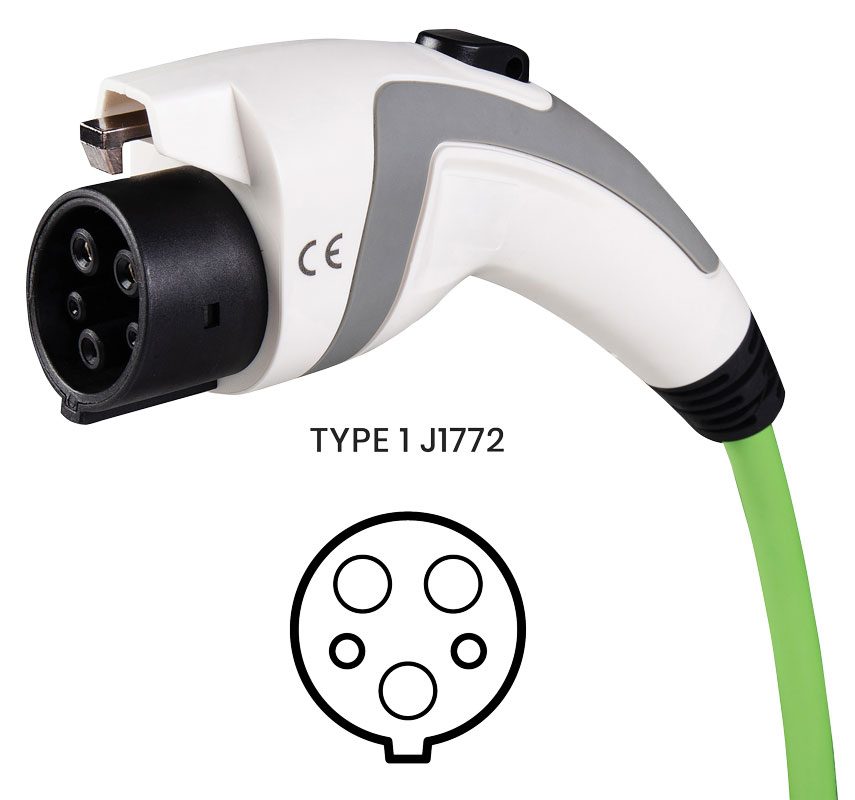
Type 2 plugs feature a 7-pin design that is the standard for the European market. It offers fast charging capability with a power output level of 3.7kW-7kW AC. Exceptions to this include Tesla Superchargers - they provide DC voltage over Type 2 connectors with an output of >130kW, and 3-phase home/workplace chargers that charge at up to 22kW AC.
Type 2 connectors have an inbuilt locking mechanism that ensures you can safely and reliably use them at charging stations without worry of disconnection by other users.

Tethered – the cable is permanently attached to the wall charger. Advantages of this option included practicality, as you don’t have to go through the hassle of using the cable in the boot of your car every time you need to charge. Simply uncoil from the wall box and plug in to your EV. Another benefit is security, as the cable cannot be removed or stolen from the charging station.
Untethered (or socketed / socket only) – The charge cable is not permanently attached, there is a Type 2 socket fitted to the charging station. This gives you the flexibility to use any cable/connector type, and any length of cable. Untethered chargers could be seen as more inconvenient due to the need to use your own cable (often stored in the boot of your car) and plug in both ends before charging can begin. The reverse process applies before setting off. However, without a cable, untethered units look tidier on your driveway.
After submitting an enquiry a text message will be sent to your mobile phone to ask further questions.
We ask the following for all new installations – but don’t worry if you can’t answer all questions, our experts will conduct a full survey before starting work:
- Do you have private off-street parking to install your EV charge point, where the cable will not run across a public footpath? (please send a photo)
- Confirm that you have strong mobile or WIFI signal at the install location
- Confirm the size of your main cut-out fuse (located in the electricity meter box on your property. This is normally on the outside wall or under-stairs (please send a photo)
- Do you have a looped service? (please send a photo)
- Your MPAN number (meter point reference number)
- Do you have main bonding to your gas and water supplies? (please send a photo)
- Is there space in your existing consumer unit / fuse box? (please send a photo of the existing consumer unit and the space surrounding it.
- Where do you need the charge point located?
- Will the charge point be located within 10 metres of the consumer unit? Specify the approximate distance (please send a photo. Runs of over 10 metres are possible but will incur additional cost.
Non-standard charger installations may incur an additional cost. Once your order is placed, we'll be in touch to better understand your requirements and produce a no-obligation quote for additional works.
It may seem obvious, but the charger should be sited where you park your EV, this could be a private driveway to the side or front of your property, or garage. When positioning think about where the cable plugs in to your car (is it at the front, side, at the back?) and how you intended to park your car – do you prefer to reverse or drive in-to your driveway?
Lastly, think about where the cable will lay when connected to your car. Ideally the cable shouldn’t present a trip hazard, or block gates/access.
When installing a new EV charging point our installers will need to complete a few safety checks, one of these is checking for earth/main bonding. These connections are made to prevent a dangerous voltage between two accessible metal parts, in case there is a fault.
An easy way for you to check if your gas and water supplies are bonded is to check the supply meter box for gas, and your incoming mains water supply near the stop-cock.
You are looking for green/yellow wires connected to the main gas and water pipes using an earthing/bonding clamp.
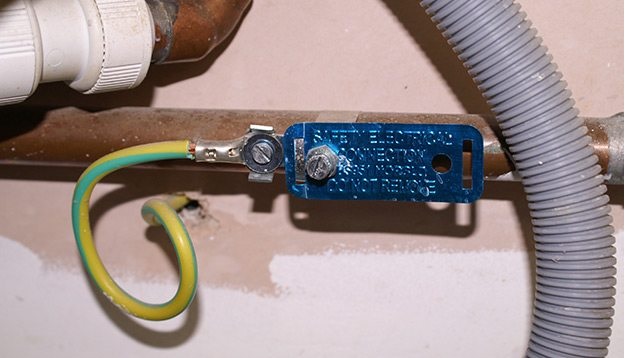
The MPAN (Meter Point Administration Number) is a unique 21 digit reference number used in the UK that identifies each electricity supply point.
Your MPAN will be listed on your electricity bill. It may be called a Supply number. They're often printed at the bottom of the first page of your bill or on the reverse of the first page.
A looped service means that your property is sharing the main power supply cable with another property (normally your neighbour). In some circumstances this could mean that your main fuse is not suitable for an EV charger or cannot be upgraded.
Typically, if you have one cable running to your main fuse then you do not have a looped service. If you have two cables this would indicate a looped service.
This is located in the electricity meter box on your property.
For clarification please ask your power distribution network operator (DNO), they will be able to tell from your records.
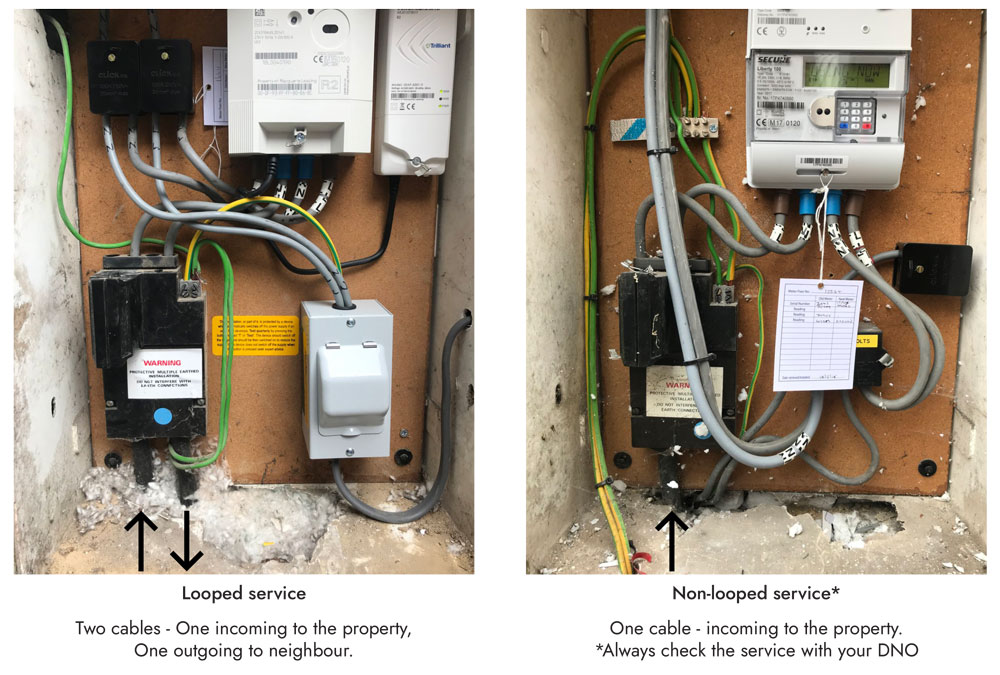
The main fuse (cut-out fuse) is located in the electricity meter box on your property. This is normally on the outside wall or under-stairs. Check for labelling on the top or side of the fuse, you are looking for the Amperage (A) – this is normally 100A or 60A.
If you are still unsure of the main fuse size, please send us photos and we will confirm for you.
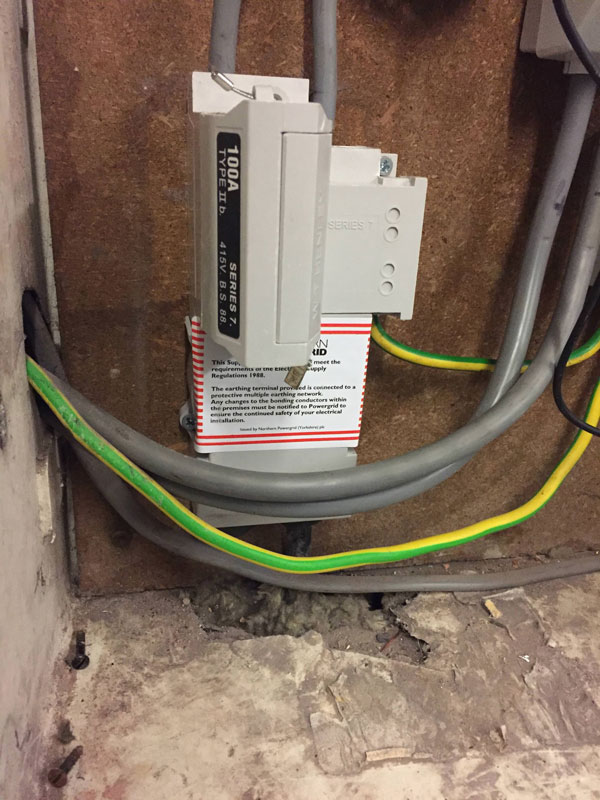
Depending on advice offered by the DNO (power distribution network operator) of the property, we can offer the installation of an optional CT clamp. The CT clamp, in conjunction with our in-built load management system, protects the main fuse from overload by monitoring the total load being drawn by the property and adjusting the EV charger output accordingly.
A Current Transducer (CT) Clamp is a safety feature, it will monitor the total load (amps) going through the home. If the clamp detects that the load is close to exceeding the maximum the house is able to handle, then the EV charger rate will be reduced. Ultimately this will prevent the house fuse from being blown.
Yes, you can plug an electric vehicle into a regular outlet/socket using a Mode 2 charger (find out more about Charging Modes here), but you will only be able to charge at the rate of up to 2.3kWh. This low rate of charging could take over 26 hours to fully charge from empty based on a typical 60kWh battery BEV (Battery Electric Vehicle).
Smart EV chargers in their simplest form are chargers which are connected to the internet. The main purpose of this connection is to ensure that the device can be updated with firmware, especially as new software and technologies are released into the market. However, being smart also factors in the ability to utilise renewable energy sources and the ability to integrate with times of use and economy tariffs, and also balance power demand with the property and main electricity grid. SyncEV BG are Smart chargers, and feature OCPP (Open Charge Point Protocol) – the global standard for EV charger communication.
- The OZEV EVHS grant (for homeowners) ends on the 31st of March 2022 and cannot be claimed for installs completed after that date. If you live in a flat, or you rent your property there
- Before 31st March 2022 EV charger grants have to be claimed on the customers behalf by an OZEV approved installer, whereby the grant is deducted from the quoted price to supply and install.
The government’s electric car grant is paid out by the Department for Transport’s Office for Zero Emission Vehicles (OZEV), and is designed to make the transition to electric car/vehicle (EV) ownership more affordable for more drivers.
This scheme is available for the purchase of new EV’s from dealerships and manufacturers. If you buy an eligible vehicle you do not need to do anything – the dealer will include the value of the grant in the vehicle’s price.
Visit https://www.gov.uk/government/publications/electric-vehicle-homecharge-scheme-eligible-vehicles for more information on the cars available, or here for up to date information on the grant scheme https://www.gov.uk/plug-in-car-van-grants
Our chargers are safer and faster than charging from a standard electrical outlet. You can also smart charge, allowing use of cheaper energy tariffs.
SyncEV BG socketed chargers work with all fully electric and plug-in hybrid EV’s (compatible charging lead required for your vehicle). Our tethered chargers are only compatible with vehicles that have a Type 2 socket. All chargers are designed to work specifically with the UK power network.
You can charge your car at any public parking spot that has a charging station, this can include on-street parking, shopping centres, restaurants, hotels, or hospitals. Public charging requires specific charge cards (often called RFID cards).
Or, charge at home in a private garage / driveway, or at a designated parking spot/shared parking facility (common for apartments). Many places of work now offer charging facilities to employees, often billed via roaming charge cards or in-house schemes.
Whether you have access to all public charging stations depends whether your charge card allows roaming. Roaming allows charging stations from different providers to communicate and exchange data with each other. If “roaming” is activated, you have access to charging stations from multiple providers. To access this feature, you'll need to purchase a charge card or charging subscription with "interoperability" or "roaming".
An increasing number of charge points now accept contactless credit or debit card payments, negating the need for specific charge cards.
The average electricity fee is approx. 29p per kWh* in the UK (consumer rate, as of February 2024). If your electric car has an empty battery and approximately 60kW capacity, charging your electric car would cost a total of 60kWh x 0.21 = £17.40.
*energyguide.org.uk/average-cost-electricity-kwh-uk/
This really depends on the type of charging station, your car model, driving style, as well as traffic speed and road conditions. As a guide, to fully charge a 60kW electric vehicle using a SyncEV BG wall charger would take approx. 8 hours.
Commercial rapid chargers will replenish the battery significantly quicker, in around 40-60 minutes.
- There are many factors that'll have an impact on your power consumption and time to charge. You can extend the range of your electric vehicle by adopting eco driving techniques and working with your vehicle’s features. We recommend that you:
- Anticipate the road ahead to avoid harsh acceleration and braking.
- Watch your speed.
- Consider how you use the heating and air conditioning, (for example, pre-heat the car while plugged-in to avoid consuming energy from the battery at the beginning of the journey).
- Understand and using your vehicle’s eco-mode or features, such as regenerative braking.
Yes, if the charging station is compatible with your charging cable and able to read your charge card.
Just like regular electricity outlets, charging stations may have different outlets and connectors depending on the country where you're charging and your cars origin.
To simplify things car manufacturers have now standardised two types of outlets and connectors.
From the car side, a Type 1 socket is common for Japanese and American vehicles, and a Type 2 socket is the European standard.
From the charging station side, most domestic chargers are equipped with a Type 2 socket. Commercial rapid chargers have a variety of connectors, including Type 2, CHAdeMO and CCS (Combined Charging System).
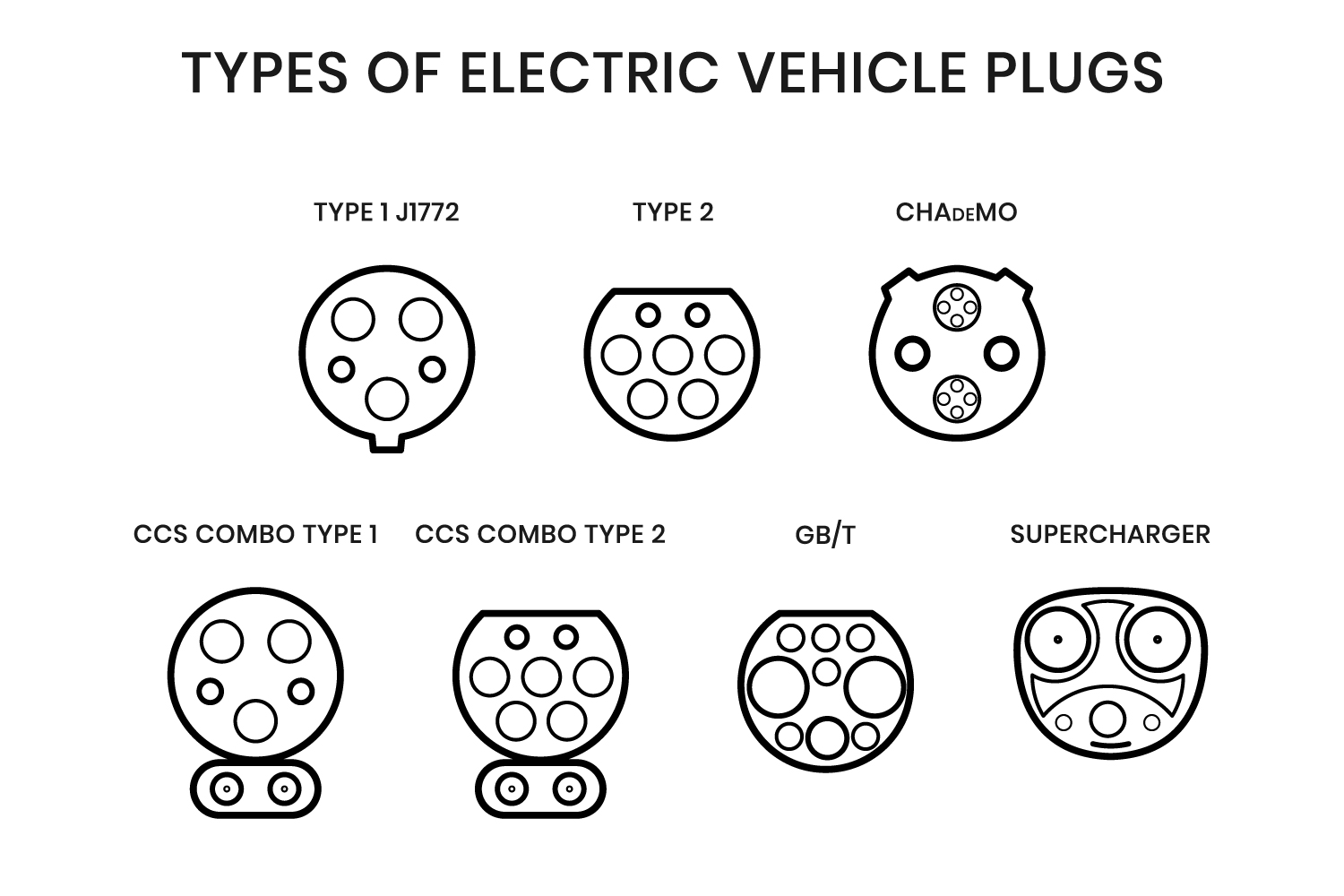
Our in-built load management system protects the main fuse from overload by monitoring the total load being drawn by the property and adjusting the EV charger output accordingly. The load management feature is only available as an option with the installation of a separate CT Clamp.
Yes, most UK properties run off a power supply (called single-phase) which easily supports 7kW chargers.
To benefit from 7kW charging the first thing to check is the size of your property’s main fuse.
It is preferable to have a 100A incoming supply fuse into the property to allow the maximum output of a 7kW charger, however, the electrical demand of the property needs to be calculated and confirmed to make sure this is suitable.
If you have less than a 100A main fuse then we are still able to install a charger, however, depending on what the demand on the property is, you may need to have the fuse upgraded by the local DNO (power Distribution Network Operator)
You can find your main fuse linked to your electricity supply meter. There should be a label on the side of the fuse showing the amp rating. If you are unable to find it, please call your electricity provider to clarify your fuse rating.
A 22kW charger is 3 times faster than a 7kW charger but requires a three-phase electrical setup. Most UK residential properties run on single-phase electricity so cannot have a 22kW charger installed. Single phase supports a maximum of 7kW EV charging.
Also, it’s worth checking that your EV can support 22kW AC charging. Many vehicles only support higher charge rates when using Commercial DC rapid chargers.
With Monta App and Integrated SolarCharge you can easily use surplus energy from you solar panels to charge your electric vehicle.
For 7kW charger installations:
- 1 x 6mm 3 core armoured cable up to 30m,
1 x 10mm 3 core armoured cable over 30m
For 22kW charger installations:
- 1 x 6mm 5 core armoured cable up to 30m,
1 x 10mm 5 core armoured cable over 30m
These modes indicate the type of charger being used and its power output:
- Mode 2 (AC single phase supply) – 2.3kW max from a domestic 3-pin socket using a cable with an inbuilt protection device and power control that emulates basic Mode 3 charger signals
- Mode 3 (AC single phase supply) – 7.4kW – a typical dedicated home charging point, tethered or untethered with smart control and protection
- Mode 3 (AC three phase supply) – up-to 22kW – Limited to 3 Phase power supplies only (charging at work, or commercial premises), tethered or untethered with smart control and protection
- Mode 4 (DC current) – 22kW-100kW+ - Typically rapid and super-rapid destination chargers, found at motorway services, supermarkets, shopping malls
The Open Charge Point Protocol (OCCP) is a global communication standard for EV chargers and the networks that they run on.
OCCP offers:
- Flexibility - With some EV charging stations, the hardware only works with its own brand of software. That means you're locked in to paying their networking fees in order to keep your charger online. When you choose an OCPP-compliant charging solution, you can change your network whenever you want.
- Security - If you purchase non-OCPP charging station and the manufacturer goes out of business your charger will stop working. With OCPP interoperability, you never have to worry about these kinds of stranded assets.
- Competitiveness – You’re in control to choose the software that’s right for you, meaning service providers actively develop their software to the become the most feature-rich, user-friendly and up-to-date solutions.
No – our charging systems are specially designed to completely disconnect the charging point from the car if a fault develops, therefore an earth rod (which is expensive and time consuming to install) is not required.
Yes, our Type 2 connectors have a pin locking system to prevent unwanted disconnection
Our chargers update over the air as new firmware is released. Simple to start via the Monta or Ev.Energy apps.
You will be notified when updates and the new features we have been working on are available.
We use tried and tested UV stabilised polycarbonate to help protect the colour and stability of our chargers. Chargers are also IP and IK rated to protect against
You can make money from your BG Sync EV Charger using our Monta app– Make your charger public so other users can see it and pay to use your charger.
